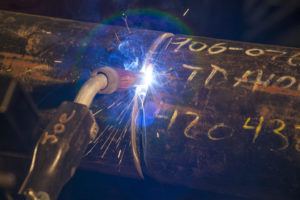The welding industry, like many others, have integrated the latest advances in technology on their operations. With the help of robotic and automated welding, manufacturing has seen constant and amazing growth.
Here are three key points you need to know about automated welding.

1. Automated welding has been around for almost 60 years now.
Automatic welding was first introduced to the American manufacturing industry in the 1960s. In the 1980s, automated welding has seen a widespread of use in the automotive industry. After General Motors successfully implemented automated welding systems in their operations, other manufacturers began utilizing the technology as well.
2. Automatic welding enhances quality and productivity.
In this competitive industry, companies continually look for ways to increase their production. What better way to keep the operations going but enhancing quality and productivity?
Many companies – from local job shops to manufacturing giants– are now turning to welding automation to achieve such goals. By going automated, companies see shorter production time, greater efficiency, increased productivity and improved profitability.
3. Automated welding has two subcategories.
Different industries and different applications may require different automation solutions. For welding, automation can be further divided into two categories: semi-automated and fully automated.
- Semi-Automated Welding
Semi-automatic welding needs an operator to manually load and set up the workpieces. The torch, welding parameters, and motions are automated. Automation is pre-set and adjusted to dynamic specifications needed to perform the weld. Once the system is done welding the component, the operator needs to remove the welded part and then repeat the step of setting up for the next weld.
Semi-automated welding is designed to improve the welding process without fully replacing skilled operators, thus making it the most common choice when it comes to welding automation.
- Fully Automated Welding
In fully automated welding, the system loads the workpiece, sets up the part into position, welds, monitors the quality and unloads the finished component once done. Some systems also include post-weld quality inspection. Fully automatic welding is commonly used in industries that involve fabrication of large volumes of components.
Looking for an automated welding solution for your company? ArcBoss is a portable welding manipulator that enhances productivity and ensures consistent quality weld. This one-of-a-kind manipulator promotes worker comfort with its flexibility, giving you more mobility and adjustability.
Contact us now and request a quote!